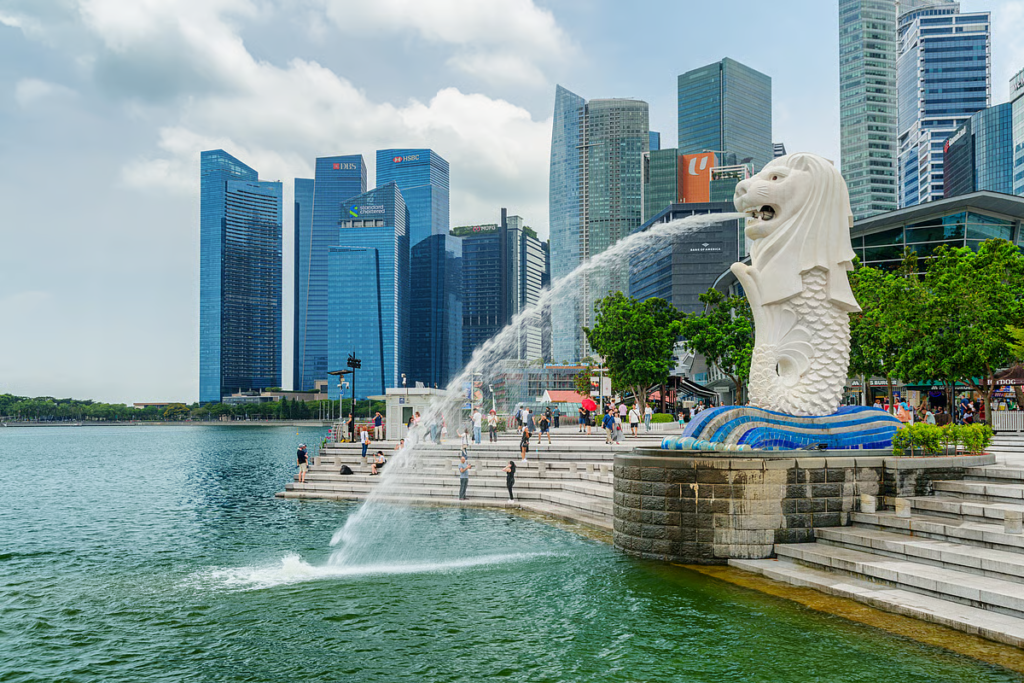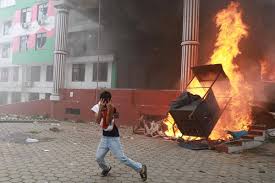Waves of unrest are sweeping across South Asia, shaking the foundations of a region long celebrated for its resilience and diversity. From political upheavals to economic hardship, from environmental crises to rising social discontent, the pulse of instability beats louder with each passing year. South Asia, home to nearly two billion people, finds itself at a crossroads where hope and hardship coexist in delicate balance.
As the world’s attention shifts to emerging powers and economic transformations, South Asia’s internal challenges reveal an urgent need for renewal, unity, and reform. The question is no longer whether the region can endure—but how it can evolve.
Political Tensions Deepen Across the Region
At the heart of the waves of unrest in South Asia lies deep political fragmentation. Democratic institutions that once symbolized progress are now under strain, challenged by populism, polarization, and growing mistrust between citizens and governments.
In several South Asian nations, protests have erupted over issues ranging from corruption to governance failures. Citizens are demanding transparency, accountability, and a more equitable distribution of resources. The social contract between the people and the state feels increasingly fragile, particularly in countries where political dynasties and power struggles dominate national discourse.
This political uncertainty not only destabilizes domestic affairs but also weakens regional cooperation—making it harder for South Asian nations to address shared concerns such as border tensions, migration, and trade.
Economic Pressures Amplify the Waves of Unrest
Economic instability is another powerful force driving South Asia’s fragile stability under strain. The region has faced a series of economic challenges: inflation, rising unemployment, and mounting public debt. For many families, the cost of living has soared while incomes have stagnated, creating widespread frustration.
Global disruptions—such as fluctuating oil prices, trade imbalances, and post-pandemic recovery struggles—have worsened the situation. The economic divide between urban elites and rural populations continues to widen, leaving millions in poverty despite years of growth.
For the youth, who make up a significant portion of South Asia’s population, job scarcity and limited opportunities are breeding disillusionment. When ambition meets hopelessness, unrest is never far behind.
Social Divides and Identity Politics Fuel Discontent
Waves of unrest in South Asia are not only political or economic—they are deeply social. Identity politics, religious tensions, and ethnic divisions continue to shape national narratives. In some parts of the region, minority communities face marginalization and discrimination, fueling resentment and conflict.
Social media, once a tool for connection and empowerment, has also become a battlefield for misinformation and hate speech. Online polarization mirrors real-world divides, amplifying mistrust among communities.
In this climate, even small sparks can ignite widespread turmoil. The struggle for inclusion, equality, and dignity has become central to South Asia’s social movements—demanding governments to listen, engage, and reform.
Environmental Crises Intensify Fragile Stability
South Asia is one of the most climate-vulnerable regions in the world, and its fragile stability is increasingly threatened by environmental crises. Rising sea levels, devastating floods, and prolonged droughts have displaced millions, destroyed livelihoods, and intensified competition over scarce resources.
From Bangladesh’s sinking coastlines to Pakistan’s catastrophic floods and India’s record-breaking heatwaves, the evidence is impossible to ignore. Environmental stress has become both a humanitarian and political issue, often pushing already vulnerable populations into desperation.
As governments struggle to respond, the lack of coordinated climate action has exposed deep systemic weaknesses. The waves of unrest are no longer just about politics or economy—they are about survival itself.
Cross-Border Tensions and Security Challenges
Regional instability is also being magnified by cross-border tensions and security challenges. Long-standing disputes—whether territorial, ideological, or historical—continue to hinder progress and cooperation. The mistrust between neighboring nations not only disrupts trade and diplomacy but also fuels arms races and border clashes.
Terrorism, extremism, and organized crime remain persistent threats. These challenges transcend national boundaries, demanding collective action that is often missing. The inability of South Asian countries to build mutual trust has made the region vulnerable to both internal and external manipulation.
As waves of unrest ripple across South Asia, peace and security hang in a delicate balance—threatened not only by visible conflicts but also by the invisible forces of division and distrust.

Migration and the Human Cost of Instability
Behind every headline of unrest lies a human story. Economic hardship, political repression, and environmental disasters have forced millions to migrate—both within and beyond South Asia’s borders.
In search of stability, workers from Nepal, Bangladesh, Sri Lanka, and India move to Gulf countries, while internal migration continues to reshape cities and rural landscapes. However, migration often comes with its own costs—separation, exploitation, and uncertainty.
These human journeys are silent testimonies to the region’s instability. They reveal the resilience of people who, despite challenges, continue to hope for a better tomorrow. But they also highlight the urgent need for sustainable policies that protect human rights and promote equitable development.
Women at the Heart of Resistance and Resilience
Amid the waves of unrest in South Asia, women have emerged as both victims and voices of change. Across the region, women are leading protests, challenging social norms, and demanding justice. From grassroots movements to global campaigns, they are redefining what resilience means.
Yet, gender inequality remains a persistent barrier. Access to education, healthcare, and employment is still uneven, and gender-based violence continues to rise. Empowering women is no longer a moral argument—it is an economic and political necessity.
When women thrive, societies stabilize. Their participation is crucial for restoring South Asia’s fragile stability and building a more inclusive future.
Media, Freedom, and the Battle for Truth
The media landscape in South Asia is evolving, but freedom of expression remains under threat in many areas. Journalists face censorship, intimidation, and restrictions that stifle open dialogue.
Independent voices are crucial to holding power accountable, yet they are increasingly silenced or marginalized. In this environment, misinformation spreads quickly, fueling unrest and deepening divisions.
A free and responsible press is essential for countering waves of unrest—by informing citizens, exposing corruption, and fostering understanding across social and political lines. The future stability of South Asia may depend on the ability to protect truth and transparency.
Youth: The Hope Amid the Turbulence
Despite the turmoil, South Asia’s youth represent an extraordinary source of hope. Educated, connected, and globally aware, they are challenging outdated systems and envisioning a more progressive future.
Young entrepreneurs, activists, and innovators across the region are driving change in technology, sustainability, and social reform. However, their potential is often limited by unemployment, inequality, and lack of representation in governance.
If nurtured, this generation could become the anchor that steadies South Asia’s fragile stability. If ignored, their frustration could fuel even greater unrest. The choice before governments is clear: engage the youth or risk losing them to disillusionment.
Technology and the Digital Divide
Technology has transformed South Asia’s connectivity, but it has also widened inequalities. While urban centers enjoy rapid digitization, rural areas often lack basic access to the internet and digital tools.
This digital divide reinforces economic and educational gaps, deepening the waves of unrest between those who can participate in the new economy and those left behind. Bridging this divide requires visionary leadership and investment in infrastructure, skills, and innovation.
Regional Cooperation: The Missing Link
One of the greatest challenges facing South Asia is its inability to work as a cohesive region. While organizations like SAARC were established to promote cooperation, political rivalries and nationalistic policies have undermined progress.
In a world increasingly defined by interconnectedness, South Asia’s lack of unity limits its potential. Collaborative action in trade, climate policy, education, and security could transform the region’s future. But as long as mistrust and division persist, fragile stability will remain under constant strain.
The Path Forward: Building Resilience Amid Unrest
The waves of unrest sweeping through South Asia reveal both crisis and opportunity. While the region’s stability is undeniably under strain, its people continue to display remarkable resilience.
The path forward lies in collective reform—strengthening democratic institutions, investing in youth, empowering women, addressing climate change, and fostering regional cooperation. South Asia’s diversity, if embraced rather than exploited, could become its greatest strength.
Leadership that prioritizes inclusion, transparency, and justice can rebuild trust and renew hope. The region has overcome adversity before—and with courage and collaboration, it can do so again.
Conclusion: Hope in the Heart of Turbulence
South Asia stands at a historic turning point. The waves of unrest may seem overwhelming, but they also carry the potential for rebirth. Beneath the turbulence lies a profound desire for dignity, fairness, and unity—a shared aspiration that transcends borders and generations.
For now, South Asia’s fragile stability is under strain. Yet, within its struggle, there remains a quiet promise: that through empathy, dialogue, and determination, the region can rise above division and rediscover its strength.
The true test of South Asia’s future will not be how it endures unrest—but how it transforms it into lasting peace and progress.
Do follow us: Instagram
Read More: Beyond ONE and TIMWETECH Partner to Enhance Digital Content Accessibility



